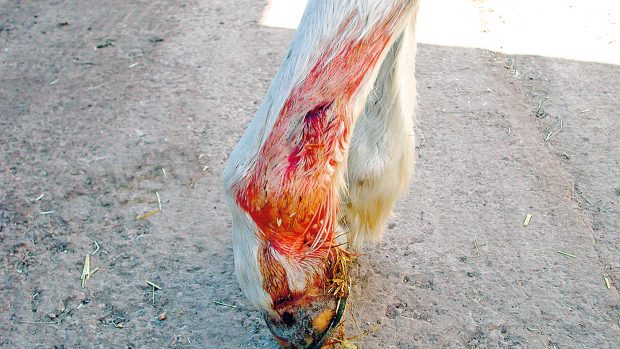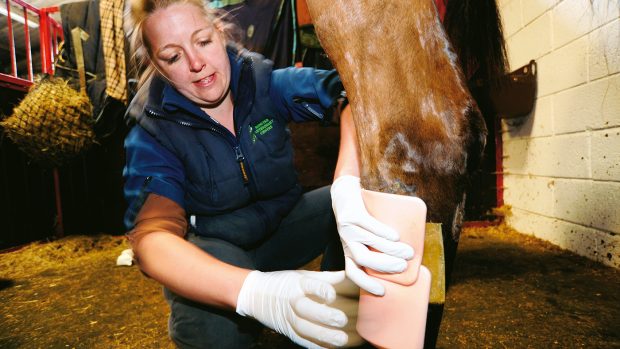National pet charity Blue Cross has highlighted horse health care with some essential first aid tips for owners
1. Invest in a good first aid kit
Make sure you have a good equine first aid kit in an easily accessible place on the yard and when you travel and that it includes your vet’s emergency numbers.
2. Take first aid action fast
Take immediate action when an injury is discovered, to prevent the condition getting worse. Call the veterinary surgeon and act on the advice given.
3. Assess wounds carefully
Type and location of a wound, and the manner in which it was caused, can affect its severity and treatment. Even the most harmless looking wounds can be life-threatening if, for example, a joint or tendon sheath has been penetrated. It is advisable to call your vet to investigate how serious a wound might be.
4. Stem bleeding
Apply pressure to the area and call the vet. Treat wounds according to veterinary advice. All treatments should be carried out with the aim of stopping bleeding, cleansing and disinfecting the wound and promoting healing.
5. Bandage with caution
Bandages should be applied over padding, with an even pressure used throughout, to avoid damaging the leg as they can cause additional pressure sores if too tight. There should be no wrinkles in either the bandage or the padding.
6. Know how to take your horse’s pulse
A horse’s resting pulse rate is 30 to 40 heartbeats per minute. It will increase with exercise and excitement, but can also increase when the horse has pain or a fever. Check the pulse at the point where the facial artery passes under the lower jaw. When the artery has been located, apply light pressure with the flat of two or three fingers. Count the pulses over 15 seconds and multiply by four to obtain the pulse rate per minute.
Continued below…
Liked this? You may also enjoy reading these articles…
This year the Animal Health Trust celebrates its

‘Something wasn’t right’: how the Animal Health Trust solved a mystery lameness

Laminitis: how to spot the signs, plus a new treatment and ways to prevent it
7. Be familiar with taking your horse’s temperature
Recognise when your horse’s temperature is raised; a horse’s normal temperature is 37.5-38.5°C. Take care when checking your horses temperature with a rectal thermometer, this can be dangerous as you could get kicked.
8. Recognise your horse’s respiratory rate
A horse’s resting respiratory rate is 8-15 breaths per minute but it will increase with exercise and excitement. To check it stand either at your horse’s side and watch his ribcage rise and fall or watch his nostrils flare with each breath.
9. Know how to check the digital pulse
Being familiar with your horse’s normal digital pulse will help you identify signs of pain or inflammation in the foot, including laminitis. A stronger and more easily felt pulse may indicate a problem. Run your fingers gently across the back of the pastern half way between the fetlock and the coronary band. Apply light pressure until you feel a slight groove above the bulb of the heel. Gently feel for a slight pulse but don’t press too hard or you will stop the blood vessel.
10. Recognise the signs of lameness
Including an increased digital pulse. This can vary from slight stiffness to serious pain. If you know the cause of lameness do tell your vet, if not, do call the vet for advice.
11. Be aware of the signs of colic
The term is used to describe abdominal pain – it can indicate a problem with the gut or other organs in the abdomen. Early detection of colic will improve the chances of a good recovery. Be aware of restlessness and pawing at the ground, sweating and increased breathing rate, elevated pulse rate, eating less or reduced droppings, irritated kicking to the stomach, stretching as if to urinate, rolling or attempting to roll. Colic should always be treated as an emergency.
12. Know your horse and know what’s normal
This will allow you to identify any abnormal behaviour such as not eating, excessive lying down/not moving or not interacting as normal. If you spot abnormal behaviour, investigate and call your vet for advice.




